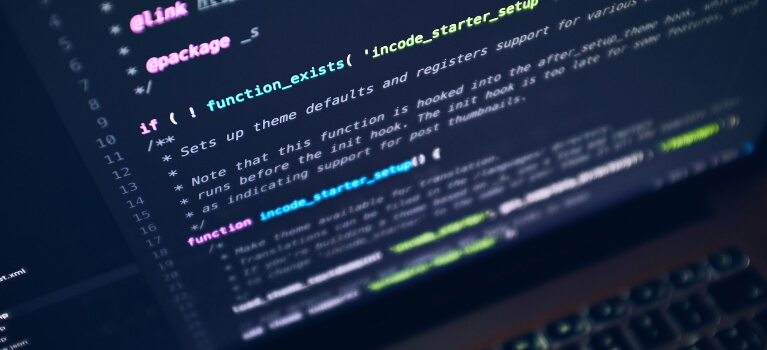Changes in technology happen rapidly. Innovations emerge as people and companies conduct business every day. Tech can be a significant benefit or a detriment when cybercriminals take advantage of innocent people and attack their vulnerabilities. These attacks are likely to continue, but there are means of mitigation. With that in mind, here are six data-backed predictions for what’s next in cybersecurity in 2023.
1. The Continued Growth of 5G
One of the top trends in the tech world is 5G. These speeds bring faster internet to more people. This market has started to grow and there are no signs of slowing down. In 2020, experts set the 5G market value at $5 billion and projected even more growth. It will climb to nearly $800 billion by the decade’s end, a Compound Annual Growth Rate (CAGR) of about 66%.
5G presents many positive opportunities but still offers a problem with cybersecurity liabilities. Cybercriminals will have more chances to launch attacks with this developing technology. There are risks for businesses to incorporate 5G, especially with their Internet of Things (IoT) devices.
2. A Rise in Phone Hacking
The rise in 5G will help people become more mobile as society becomes decentralized, especially in the workplace. Modern-day devices have extensive capabilities to help them perform many functions wherever they go. Unfortunately, cellphones bring an extra layer of cybersecurity concerns.
Mobile devices often lack the robust infrastructure to protect themselves against cybertheft. Entering 2023, the number of cellphone users worldwide will sit around 5.3 billion people, with an average of 40 apps downloaded per phone. Some of the most significant problems come from apps users can download from the app store.
Androids, in particular, are vulnerable to cybersecurity threats. Malware is a significant issue, and Android devices saw 50 times more infections than Apple. Apps and other downloads can compromise a user’s information with a few taps on the screen. Banking threats have risen with an increase of 80% in Android devices. More cellphone users mean more room for cybersecurity threats heading into 2023.
3. Increased Instances of Automotive Hacking
Cybercrime against property like phones and computers has been around for quite some time. People can incorporate technology in new ways thanks to advancements such as speakers, thermostats, and doorbells. One sector with significant upgrades is the automotive industry. However, innovation brings the risk of cybercrime.
Cars have come a long way since the Model T a century ago. Trucks, sedans and vans feature automated software features that help keep drivers safe and comfortable behind the wheel. Modern vehicles often have internet capabilities inside the car. For example, Ford’s electric Mustang, the Mach-E, has a mobile Wi-Fi hotspot so drivers can easily access navigation, weather and traffic updates, and emergency services.
These features can leave drivers vulnerable as cybercriminals become more sophisticated. Vehicles often use Bluetooth technology, which can compromise cybersecurity because it’s easier to infiltrate. Cars with autonomous driving features could be even more at risk. There are more entry points for cybercriminals, leading auto manufacturers to implement strict requirements for these vehicles.
4. More Supply Chain Vulnerabilities
The automotive industry, like many others, has suffered from supply chain disruptions. Auto manufacturers rely on companies worldwide for parts to assemble their vehicles. The pandemic caused slowdowns and bottlenecks in the supply chain, and cybersecurity issues could prolong those problems in 2023 and beyond.
The COVID-19 pandemic has been one of the root causes of supply chain disruptions. Cybercriminals have taken advantage of these issues for personal gain — cyber-attacks on the supply chain jumped by over 50% in the second half of 2021. These attacks aren’t new, but cybercriminals have become more intelligent and recognize the financial impact they can have.
5. Increase in Remote Work
The pandemic forced many companies worldwide to move their operations to a remote-based system. While some offices brought their workers back, many employees continue to work from home. Telework and hybrid situations give people more flexibility in their position, leading to a continued rise in work-from-home jobs. Experts predict that in 2023, 25% of all professional jobs in North America will be remote, and that number will continue to rise in this decade. However, this can bring vulnerabilities.
Remote workers can find themselves more vulnerable at home than in the office. They may use personal devices with less protection than company-provided items. Also, their Wi-Fi could be more vulnerable if they connect to their home network. Typically, a Wi-Fi network in the office will have more features protecting devices from cyber-attacks.
6. Better Cloud Services
Many companies recognize the cybersecurity threats posed daily. Malware and ransomware attacks can cause headaches and millions of dollars in damage. The supply chain already faces enough issues, but episodes like the Colonial Pipeline incident of May 2021 don’t help the cause. Businesses have turned to cloud services to combat cybercriminals, but are they sufficient?
Cloud services have become commonplace because they offer essential security features. They can back up data, a practical step in fighting cybertheft. Ransomware attacks are less effective if a company has a quality cloud provider. Since 2017, the cloud services market has grown significantly. It had a value of $145 billion in 2017, and by 2023 it will nearly eclipse $600 billion.
However, many cloud services don’t have foolproof authentication or secure encryption. Businesses are still vulnerable if an employee accidentally or intentionally subjects themselves to malicious software. One solution in 2023 could be a zero-trust security model. This cloud system requires continuous authentication for employees to access applications and data. It will help companies transition to a decentralized workplace.
Cybersecurity Heading Into 2023
The world seems to be changing by the minute. Since 2020, the pandemic, supply chain issues and other hot topics have dominated the news coverage. One constant across these events has been cybercriminals looking to take advantage of vulnerabilities, and it’s predicted this will continue into 2023.
Oscar Collins
Tags: Automotive, Cloud, IoT Devices, Supply Chain


